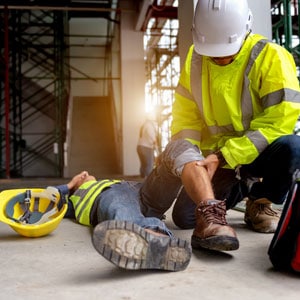The logging industry plays a vital role in the economy by providing firewood and lumber for buildings and other applications. Unfortunately, because of the nature of the industry, workers are at risk of suffering injuries.
These hard workers face numerous hazards on a daily basis. Understanding them can help reduce the risk of an accident, but the onus to prevent injuries ultimately falls on employers, not the workers themselves.
In the logging industry, cuts and lacerations are common injuries from using sharp tools and machinery, such as chainsaws and axes. The risk is particularly high during tree felling and limb removal, where workers are in close contact with sharp edges. Proper safety gear, including cut-resistant clothing and gloves and rigorous training on equipment use are critical to reducing these types of injuries.
Loggers often work at significant heights, particularly when climbing trees to remove limbs or during the construction and dismantling of logging equipment. These falls can result in serious injuries, including traumatic brain injuries, fractures or spinal cord damage. Safety harnesses, lanyards and other fall protection equipment are essential to prevent these accidents. Additionally, training in proper climbing techniques and the use of personal protective equipment (PPE) can help minimize the risk.
Struck-by injuries are prevalent in the logging industry, where workers can be hit by falling trees, branches or flying debris. These injuries can be fatal or cause serious harm, such as concussions, broken bones and internal injuries. Ensuring clear communication among team members, establishing safe work zones and wearing appropriate head protection are crucial to avoiding struck-by incidents. Additionally, proper planning and execution of tree felling, including assessing fall paths and escape routes, are necessary to protect workers.
The logging industry relies heavily on machinery, including skidders, loaders and sawmills, which can pose significant risks to operators and nearby workers. Machinery-related injuries often involve entanglement, crushing or being struck by moving parts. These accidents can result in amputations, crush injuries and other severe outcomes. Regular maintenance of equipment, proper training on machine operation, and lockout/tagout procedures can help prevent these types of injuries.
Injured logging industry workers should seek immediate medical attention. Workers’ compensation should cover that cost. Other benefits might also be possible, depending on the circumstances. Seeking a legal representative’s assistance is often beneficial so they can better ensure that they get the benefits they’re due.

